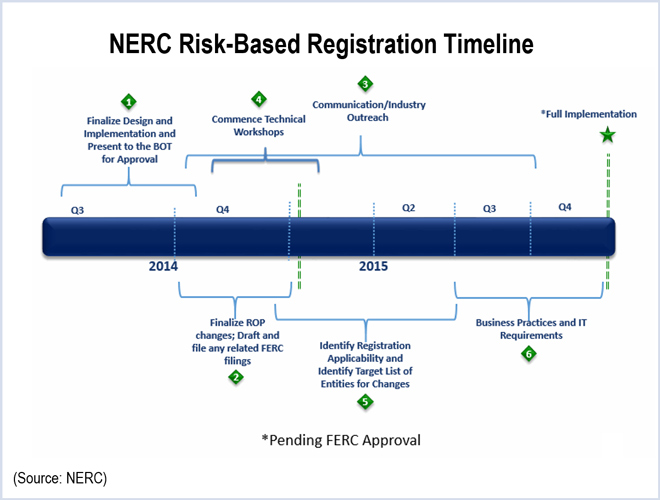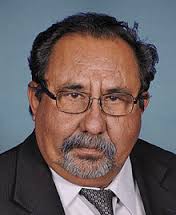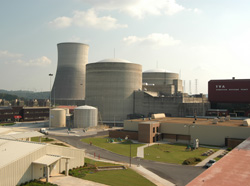By Rich Heidorn Jr.
WASHINGTON — The Supreme Court’s ideological divide was on display Wednesday as justices sparred with attorneys over whether the Environmental Protection Agency should have considered costs before deciding whether to regulate mercury and other hazardous air pollutants from power plants.
The case combined what began as three challenges to EPA’s Mercury and Air Toxics Standards (MATS), which are due to take effect in less than three weeks. After an appellate court upheld the rule in a 2-1 ruling in April 2014, the Supreme Court agreed to consider a single question: Did EPA act unreasonably because it refused to consider costs in determining whether it is “appropriate and necessary” to regulate hazardous air pollutants emitted by electric utilities?
The 90-minute oral arguments saw the court’s liberal wing, led by Justices Elena Kagan and Sonia Sotomayor, defending EPA’s stance that it should consider costs only after a cost-blind determination that the pollutants pose a public health risk and therefore should be regulated.
The regulations were initiated 25 years ago, when Congress amended the Clean Air Act in 1990. The amendments ordered EPA to regulate 189 hazardous air pollutants (HAPS), including mercury, arsenic and cadmium, which had not been previously controlled. (See related story, MATS: 25 Years in the Making.)
Conservatives, led by Justice Antonin Scalia, expressed sympathy for the challenge by Michigan and other coal-dependent states, some electric utilities and the coal mining industry.
As in many past decisions, the ruling may turn on the opinion of centrist Anthony Kennedy. In contrast with his colleagues, who appeared to have staked out firm positions, Kennedy’s questions suggested he was leaning toward EPA but willing to consider the challengers.
‘Capacious’
Early in the argument by Michigan Solicitor General Aaron D. Lindstrom, Kennedy observed that “‘appropriate’ is a capacious term.”
“It is a capacious term,” Lindstrom agreed. But he said that “cuts against the government because one of the things that’s encompassed within the term ‘appropriate’ is that it looks at all of the circumstances in … determining whether or not you’re going to regulate. Costs [are] relevant.”
Justice Kagan said Congress would have explicitly required EPA to consider costs if that was its intent. For sources other than electric generating plants, Congress expressly forbade EPA from considering costs when deciding whether to regulate. “To get from silence to this notion of a requirement seems to be a pretty big jump,” Kagan said.
Scalia said he disagreed with the premise that EPA could ignore costs because Congress did not give explicit instructions to the contrary. “I would think it’s [a] classic arbitrary and capricious agency action for an agency to command something that is outrageously expensive, and in which the expense vastly exceeds whatever public benefit can be achieved. I would think that that’s a violation of the Administrative Procedure Act.”
Uncertainty over Acid Rain Program
Among the issues in dispute is the significance and rationale for Congress’ decision to treat power plants differently from other air pollution sources.
Some provisions of the 1990 Clean Air Act amendments specifically targeted power plants, including the acid rain program that required regulations on sulfur dioxide (SO2) and nitrogen oxide (NOx) emissions from the largest coal-fired generators.
Congress ordered EPA to perform a study evaluating whether the acid rain and other programs had addressed all public health concerns from generators. It ordered EPA to develop additional regulations if the agency determined it was “appropriate and necessary.”
“So what, if anything, can we infer from” Congress’ decision to treat power plants differently from other HAPS sources? Justice Samuel Alito asked. Lindstrom was in the middle of his answer when Justice Kagan jumped in.
“They were trying to create a different regime because they thought that the acid rain program might have a real impact on what these electric utilities were doing,” she said. “So they said, wait and see and let’s see how the acid rain program works, and let’s see if we still have a problem to solve. And that’s the reason why they put the electric utilities in a different category, isn’t it?”
Later, Justice Kennedy said that EPA’s emission threshold — equal to the emission rates of the top 12% of generators in their class — was an “implicit cost consideration.”
Lindstrom said that wasn’t enough. “The fact that some utilities were able to impose things doesn’t mean it would be cost effective for other ones to do it,” he said.
Utility Air Regulatory Group
Attorney F. William Brownell, representing the Utility Air Regulatory Group, an ad hoc association of electric generating companies and industry trade associations, spoke second.
Brownell focused on the cost of the regulation — by some accounts the most expensive EPA regulation in history at an estimated $9.6 billion annually. In addition to controlling mercury emissions, it is also designed to control emissions of non-mercury metals and acid gases.
The rule sets separate standards for different types of oil-fired generators and separates lignite coal generators from others.
“Most of the costs here — the majority, about $5 billion annually — are associated with the acid gas regulation, which the agency has concluded presents no public health risk,” Brownell said.
Kagan said Brownell’s position that EPA consider costs before it decides how to categorize emission sources, was unworkable. “EPA … can’t even figure out the costs until it makes those categorization decisions,” she said.
Solicitor General Defends EPA
Solicitor General Donald Verrilli Jr., representing EPA, said the court should uphold the EPA’s rulemaking because “it is the most natural and certainly a permissible reading of the statutory text, which directs EPA to focus on health concerns and doesn’t mention costs.”
Chief Justice John Roberts pressed Verrilli to concede that EPA “could have interpreted the statutory language to allow them to consider costs.” When Verrilli declined to answer directly, Justice Kennedy repeated the question.
Verilli refused. “I think EPA … read the best interpretation of the statute was [that] it didn’t provide for the consideration of costs at the” stage where it was determining what pollutants to regulate.
Alito said there was no reason for Congress to treat power plants differently except “to hold open the possibility that power plants would not be listed even if their emissions exceeded the levels that would result in listing for other sources.”
Verrilli said he refused to accept Alito’s premise. “The argument that your honor just posed is not in the legislative history, and it’s not in the text,” he said.
Justice Stephen Breyer, who usually votes with the liberal wing, indicated he was looking for a rationale to support EPA. But he said he was concerned that “it begins to look a little irrational to say, ‘I’m not taking [cost] into account at all.’”
Verrilli said the cost consideration comes after EPA identifies the pollutants and classifies the sources into peer groups. “Once EPA lists and defines the category for listing, then the automatic requirement that is applied is that everyone in the category has to match the performance of the best 12%,” he said.
Calpine, Exelon, PSEG, National Grid Support EPA
The final speaker, attorney Paul M. Smith, representing Calpine, Exelon, National Grid Generation and Public Service Enterprise Group, supported the EPA.
“It’s important to recognize that something like 90% of that $9.6 billion — 90% of the capital cost, which is most of that $9.6 billion — has now already been spent,” he said. “And the industry has not experienced the kinds of upheavals that are being described. The rule takes effect in the middle of April, and so the idea that the result here was somehow ludicrous or outlandishly expensive is belied by the fact that the industry is bringing itself into full compliance.”
Significance
Sanne H. Knudsen, assistant professor of law at the University of Washington School of Law, said the significance of the court’s ruling, expected by June, will depend on its breadth.
One scenario is that the court defers to EPA’s judgment under the longstanding Chevron doctrine. “One would wonder, however, if that were the outcome, what inspired the court to take the case,” she wrote in a preview for the American Bar Association.
A second possibility, she said, is that the court vacates the rule in a broadly written opinion that mandates cost-benefit analyses in all public health regulations when Congress is silent.
A third scenario is that the court requires the cost-benefit analysis but upholds the rule on the grounds that a remand would lead to the same result.











